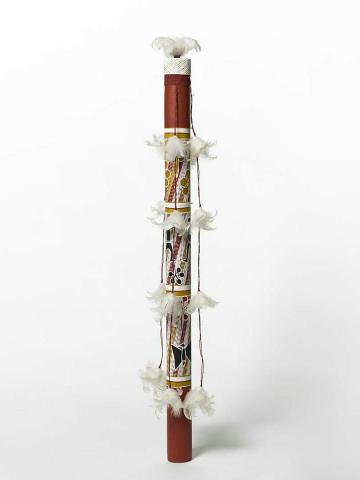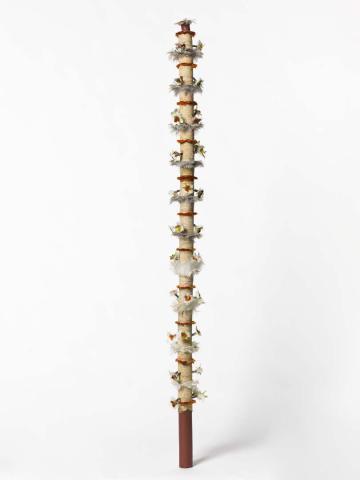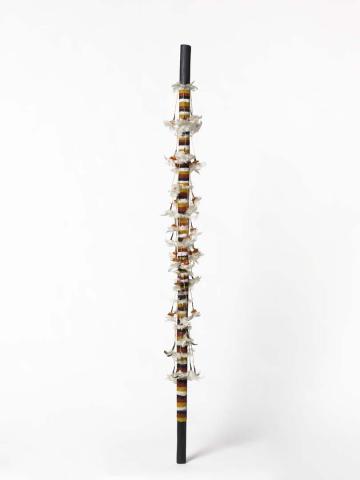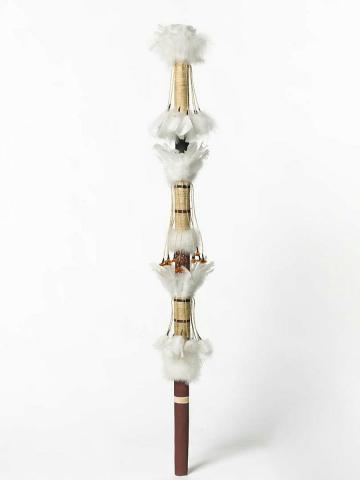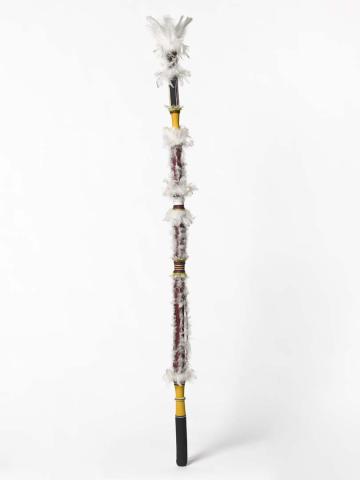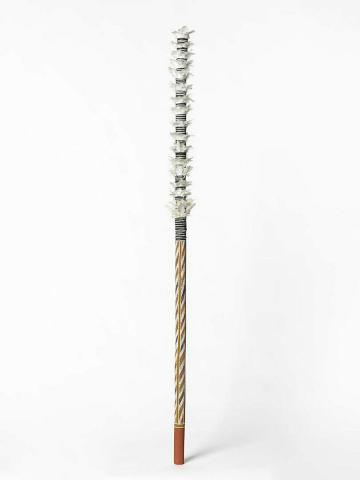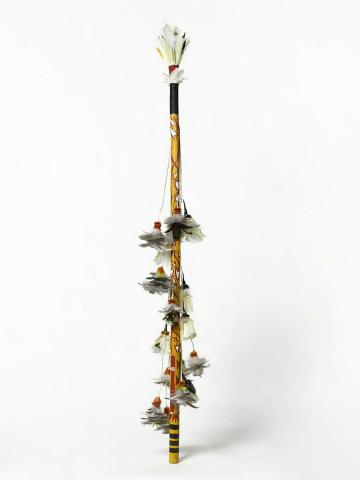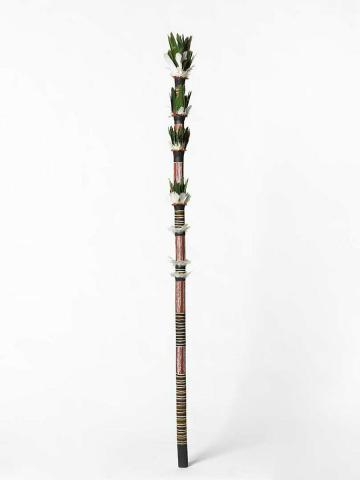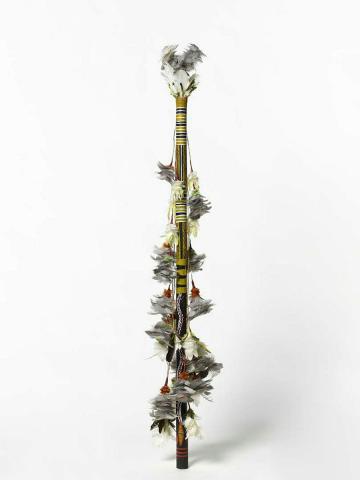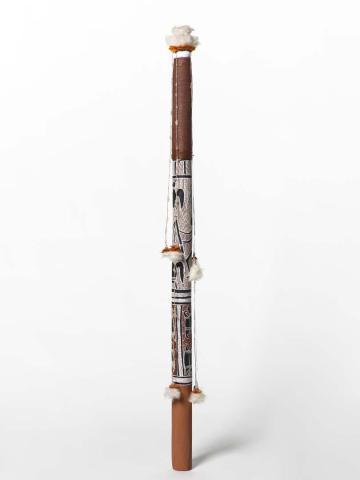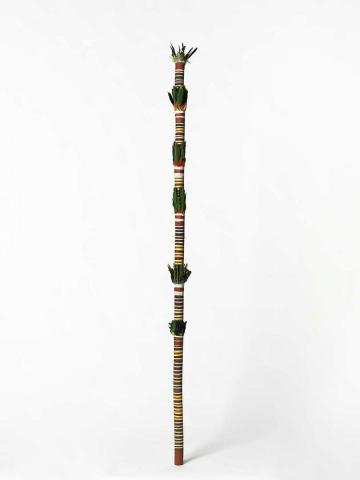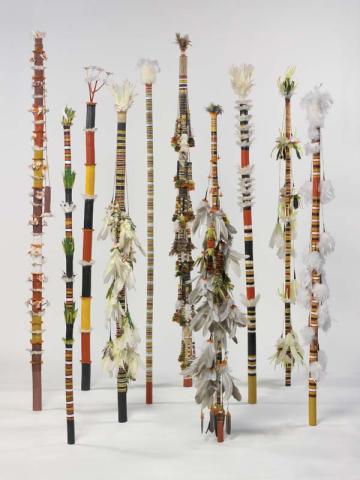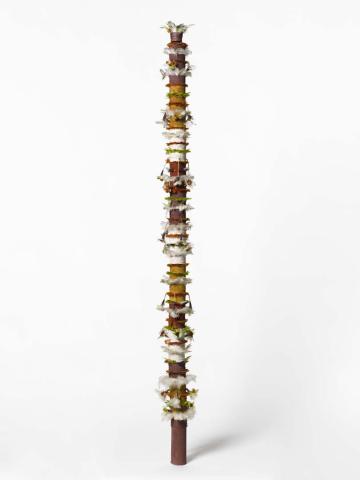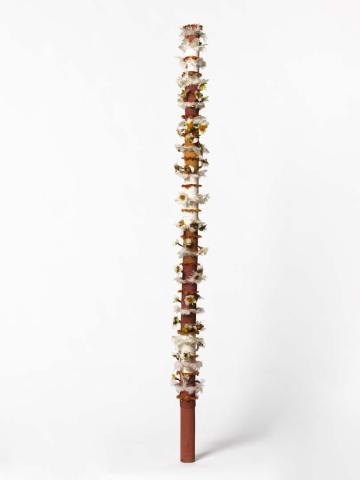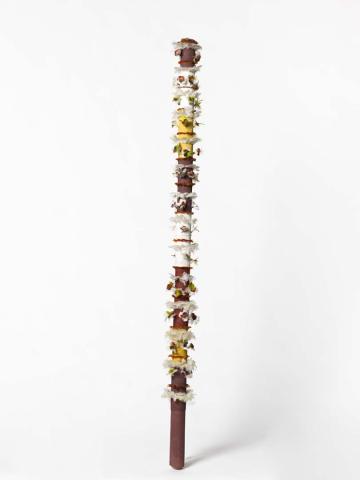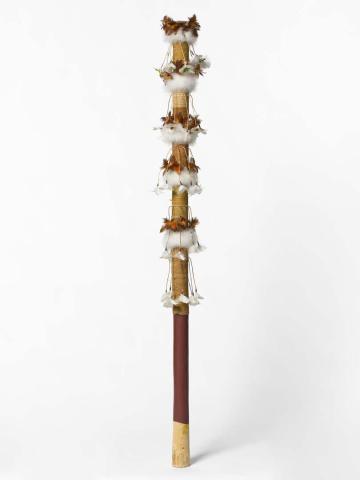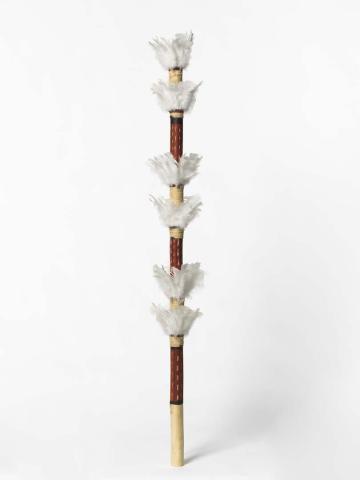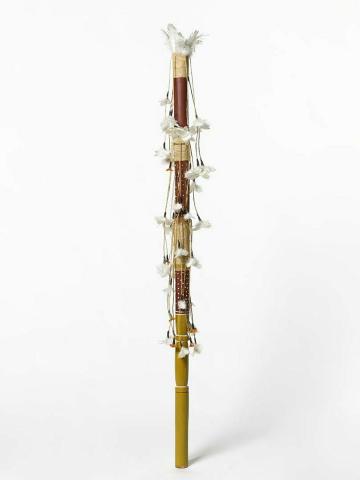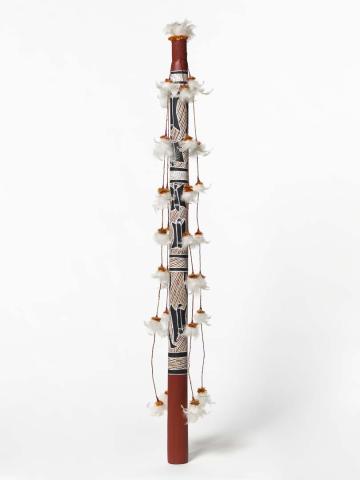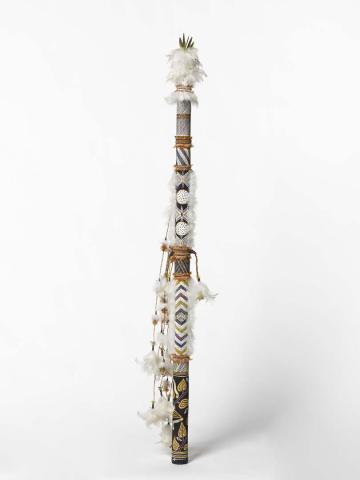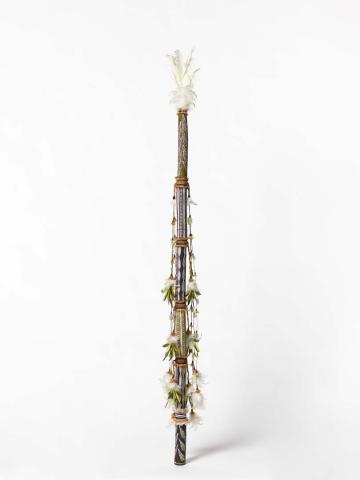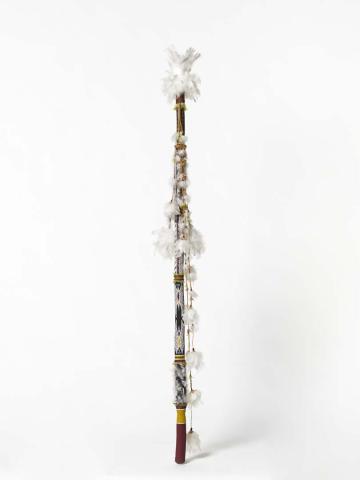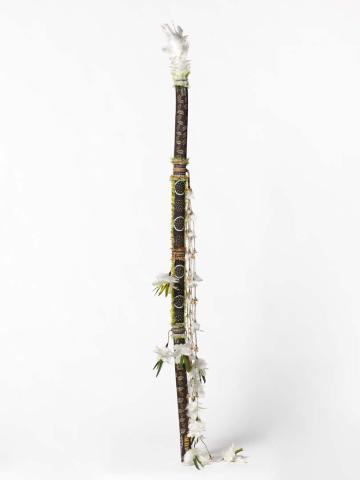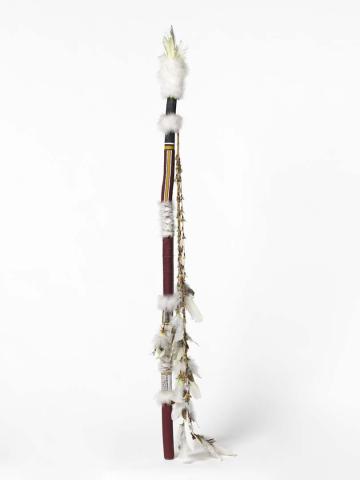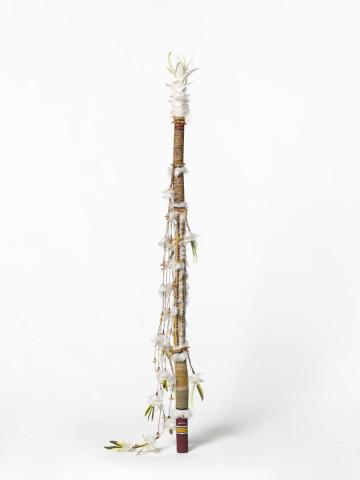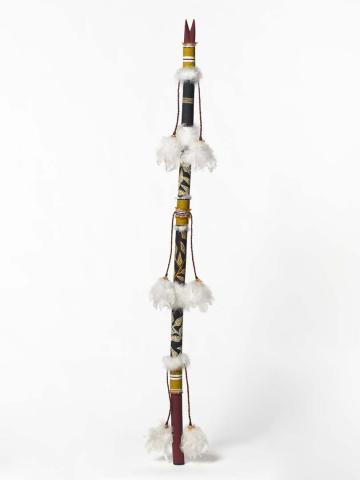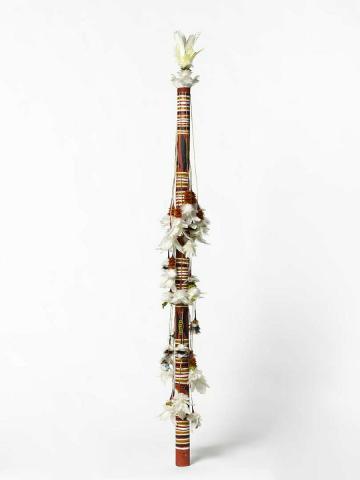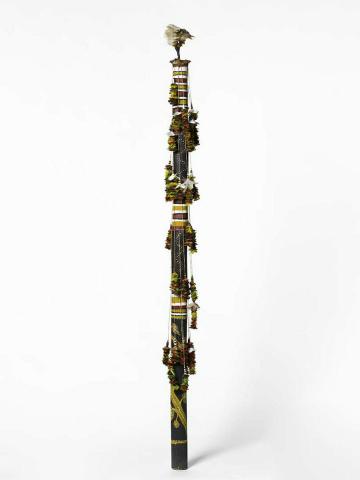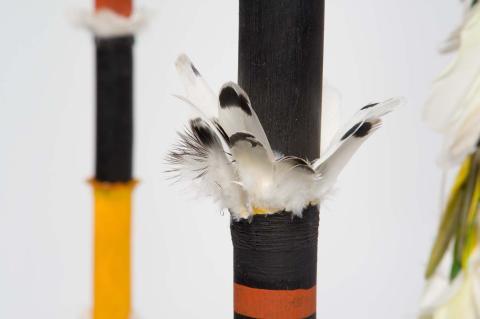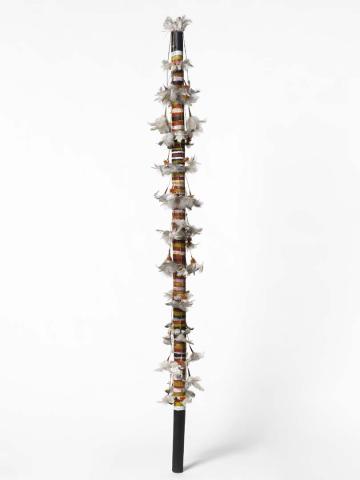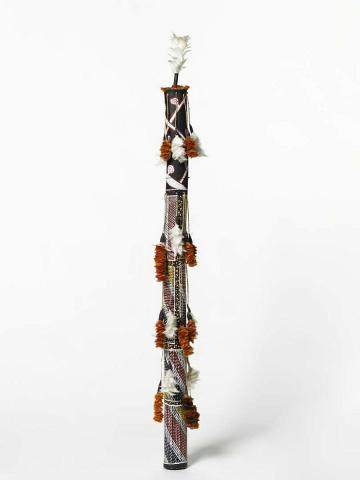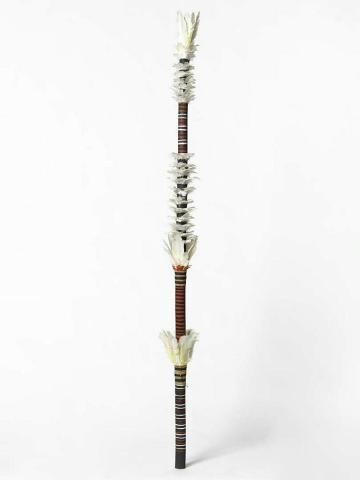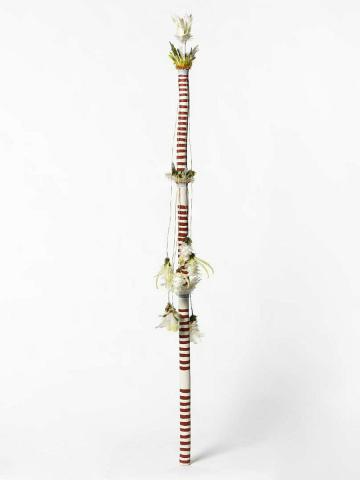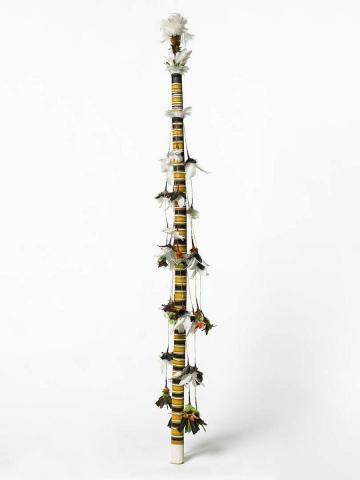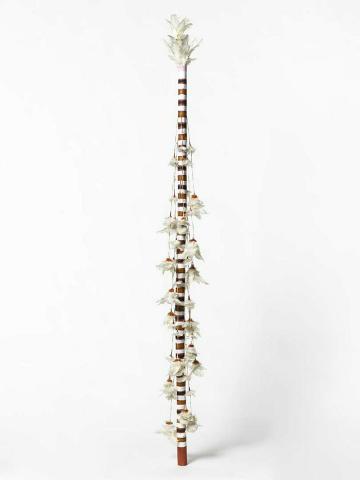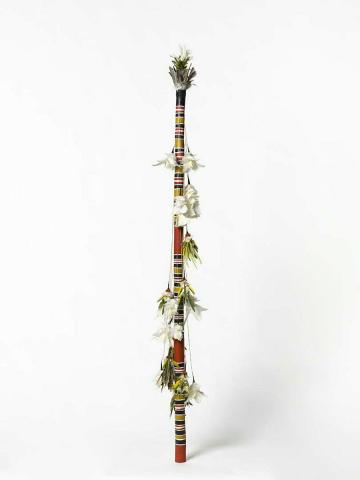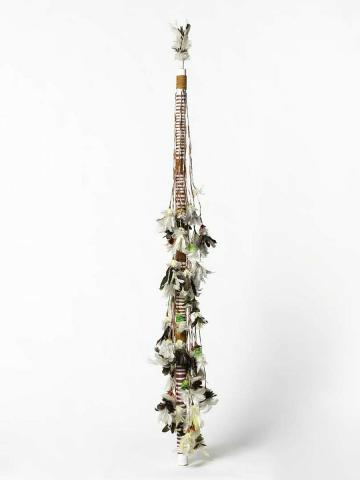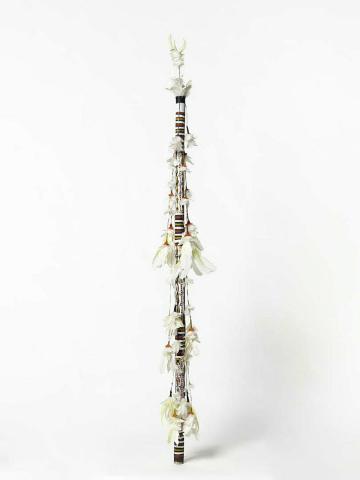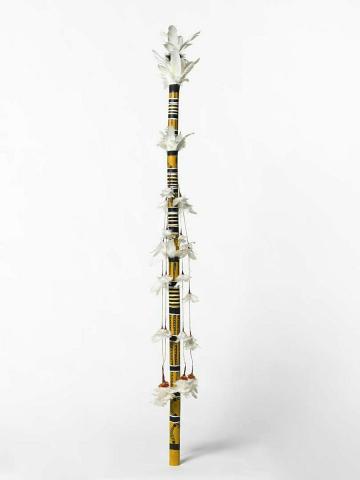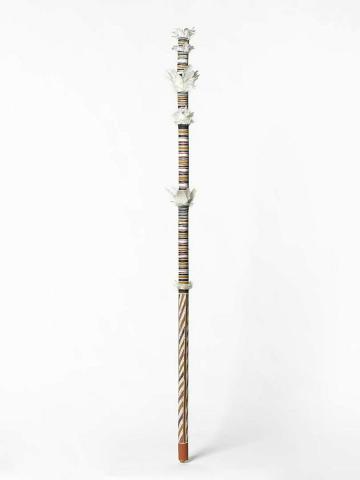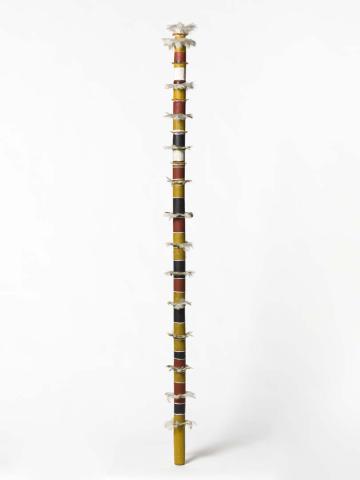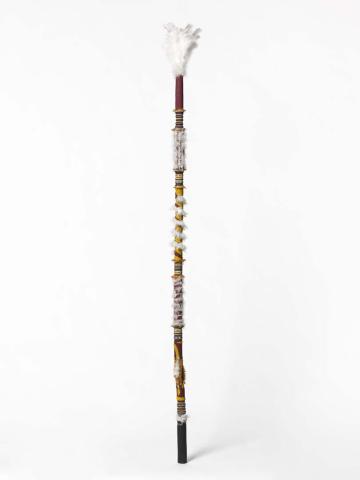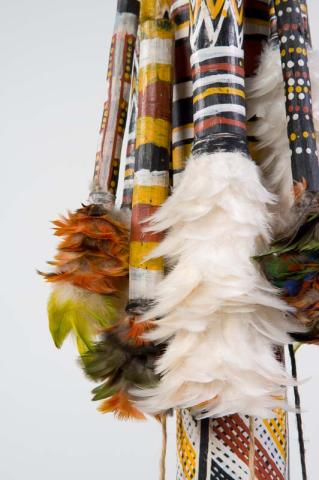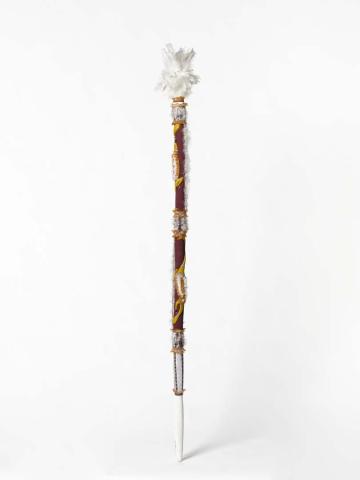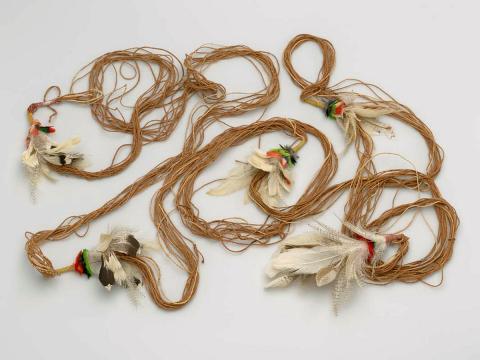Gurruwiwi: Morning Star poles
By Diane Moon
June 2005
Malu Gurruwiwi was born in 1942 into the Galpu people of Galiwin'ku (Elcho Island) located off the northern coast of Arnhem Land. He was raised there and taught the traditional law by his father (Gakupa). Gali Gurruwiwi also learned the subjects and techniques of traditional art from his father and became the specialist maker of Banumbirr (Morning Star poles) for his Galpu clan. Before his death his father passed on to his son the ritual custodianship of Banumbirr, the sacred Morning Star ceremony, and he is now transferring this knowledge and responsibility to his sons, Trevor Gurruwiwi and Paul Gurruwiwi who are both represented in the Collection.
In describing his work in the catalogue for 'Banumbirr: Elcho Island Artists and Bandigan Morning Star Collection', the 2002 exhibition held at the Australian National Maritime Museum, Sydney, Gurruwiwi states:
The small coloured feathers are nhatta (food) for mokuy (spirits). The wuluwuma stick is the ganguri (yam), same bunggul (ceremony) as for the wurrkadi (grubs/maggots). The bush string (without feathers) is holes where the wurrkadi has been eating. His home. He is inside. Boonba (butterfly), banami (Brolga), blich blich (Region Parrot) can use this pole for dhuwa (clans) manikay (songs). (The coloured feathers are from) blich blich (Region Parrot) and lorrpu (White, Sulphur Crested Cockatoo).1
The major ancestral narrative in eastern Arnhem Land tells of the Djang’kawu, two sisters and their brother who journeyed westwards from the mythical island of Burralku, distributing the souls of the unborn to populate the earth. Burralku is the conception site for dhuwa moiety people and also the resting place for their spirits after death. As they travelled, the Djang’kawu were guided in their journey by the light of Banumbirr (the Morning Star) or Venus, which rises daily in the east before dawn, heralding the light of the new day.
The Morning Star story is at the mid-point of its trajectory at Galiwin'ku (Elcho Island) after which it moves to a site mid-way between Ramingining and Maningrida near an outstation called Gamardi. Jack Wunuwun, the acclaimed artist and Banumbirr ceremonial leader who lived at Gamardi, would regularly make tea in the early morning and quietly observe Banumbirr rise, ensuring that the world was in balance.2
Banumbirr is not only the Morning Star, but also a complex set of rituals and a ceremonial pole, and may even refer to a clan or family group. Songs and dances describing the journey of the soul of the deceased to Burralku are enacted at funerals, connecting the worlds of the living and the dead. Morning Star ceremonies, which foster diplomatic links between disparate clan groups, are held annually in eastern Arnhem Land, when dances mirroring the movement of the star are performed and an elaborately decorated pole is presented to recipients in exchange for gifts of food, cloth, weapons or money. Enacting these sacred rituals evokes the origins of the first poles made by creative ancestors and assures cultural constancy for future generations.
We are all connected by the daily phenomenon of the journey of Banumbirr. It is told that an old woman cares for the Morning Star, sending it out on a long string each morning before dawn and reeling it in at daylight to be nestled in her bathi, a feathered string bag. In eastern Arnhem Land, raki (string) is a vital element in ritual performances, used for making sacred objects, body adornments and bags and long, feathered pendants which hang from the Morning Star pole. The pul pul, an ornate tuft of feathers positioned at the top of the pole or at the end of a string, represents the Morning Star ready for flight. The pole is emblematic of particular species of yams and the strings can be read as the connecting vine with its leaves and tendrils.
Individual Banumbirr poles vary greatly both aesthetically and in content. Although sharing similarities in form and structure, the ochres, bark fibre string and delicate feathers are configured differently by the makers, reflecting their identity and the specific tracts of country to which they belong. Although still significant, and representative of the Banumbirr story, these works are made specifically for sale and exhibition. An earlier major collection of Morning Star poles was acquired by the Australian National Maritime Museum, Sydney, in 1997. In the catalogue Forward, Dr Michael Edwards commented that the poles 'tell of interconnectedness, respect, continuance and peace.'3 The artists of Galiwin'ku have made these beautiful works in the spirit of their ancestors and also to share their knowledge and poetic world view.
Diane Moon, Curator, Indigenous Fibre Art, QAGOMA, June 2005.
Endnotes
- Banumbirr: Elcho Island Artists and Bandigan Morning Star Collection [exhibition catalogue], Elcho Island Art and Craft and Bandigan Aborignal Art and Craft, Elcho Island, 2002, p.2.
- Personal observation, Diane Moon, Gamardi outstation, NT, 1985–94.
- Dr Michael Edwards, in Banumbirr: Elcho Island Artists and Bandigan Morning Star Collection [exhibition catalogue], inside front cover.
Feature image: David Lakarriny Gurruwiwi / Galpu people / Australia NT b.1957 / Banumbirr (Morning Star pole) (detail view) 2003 / Purchased 2004. Queensland Art Gallery Foundation / © David Lakarriny Gurruwiwi/Copyright Agency / Photograph: N Harth, QAGOMA
Connected objects
Related artists
GURRUWIWI, Malu
1942
- 2020
Full profile
for GURRUWIWI, Malu

